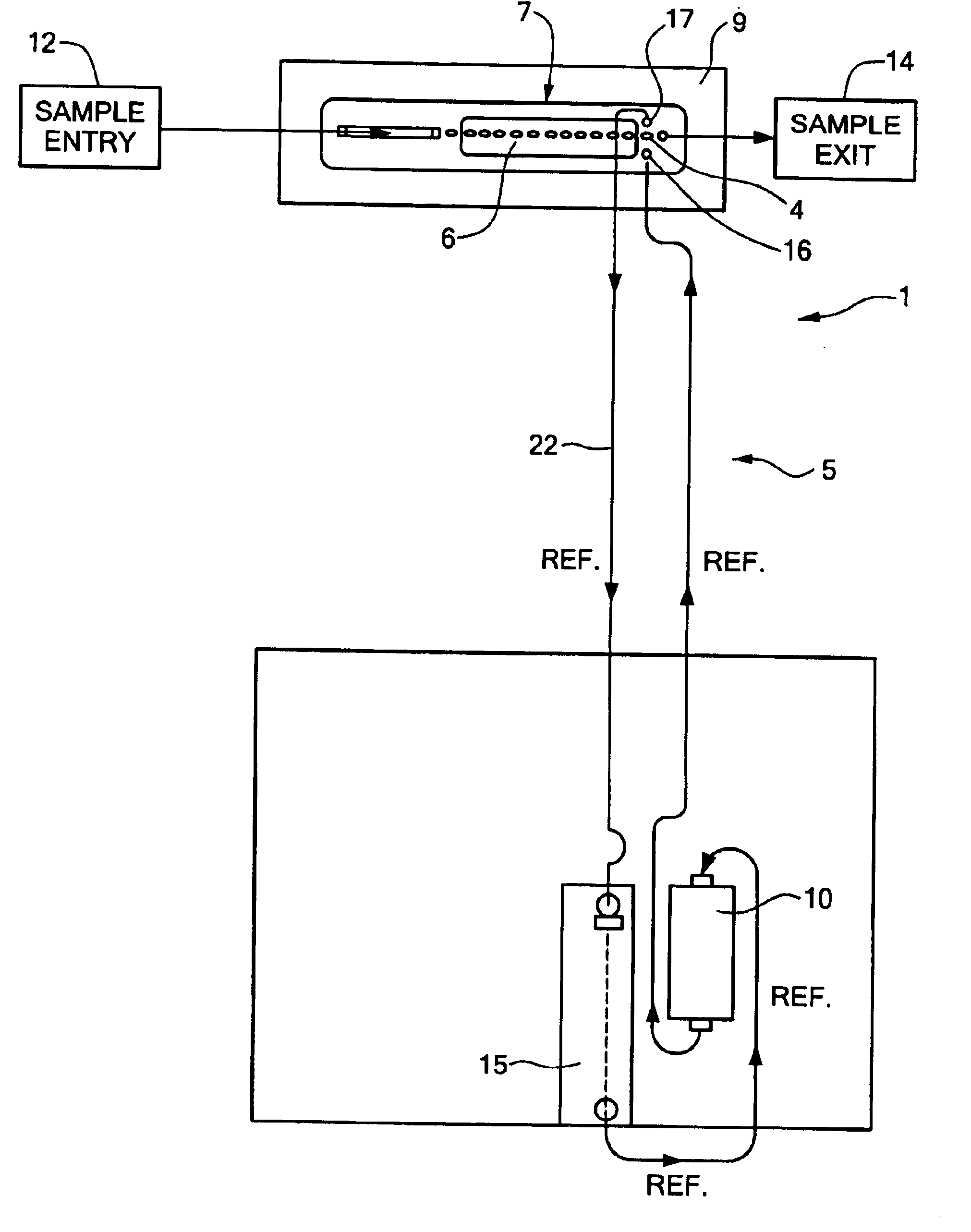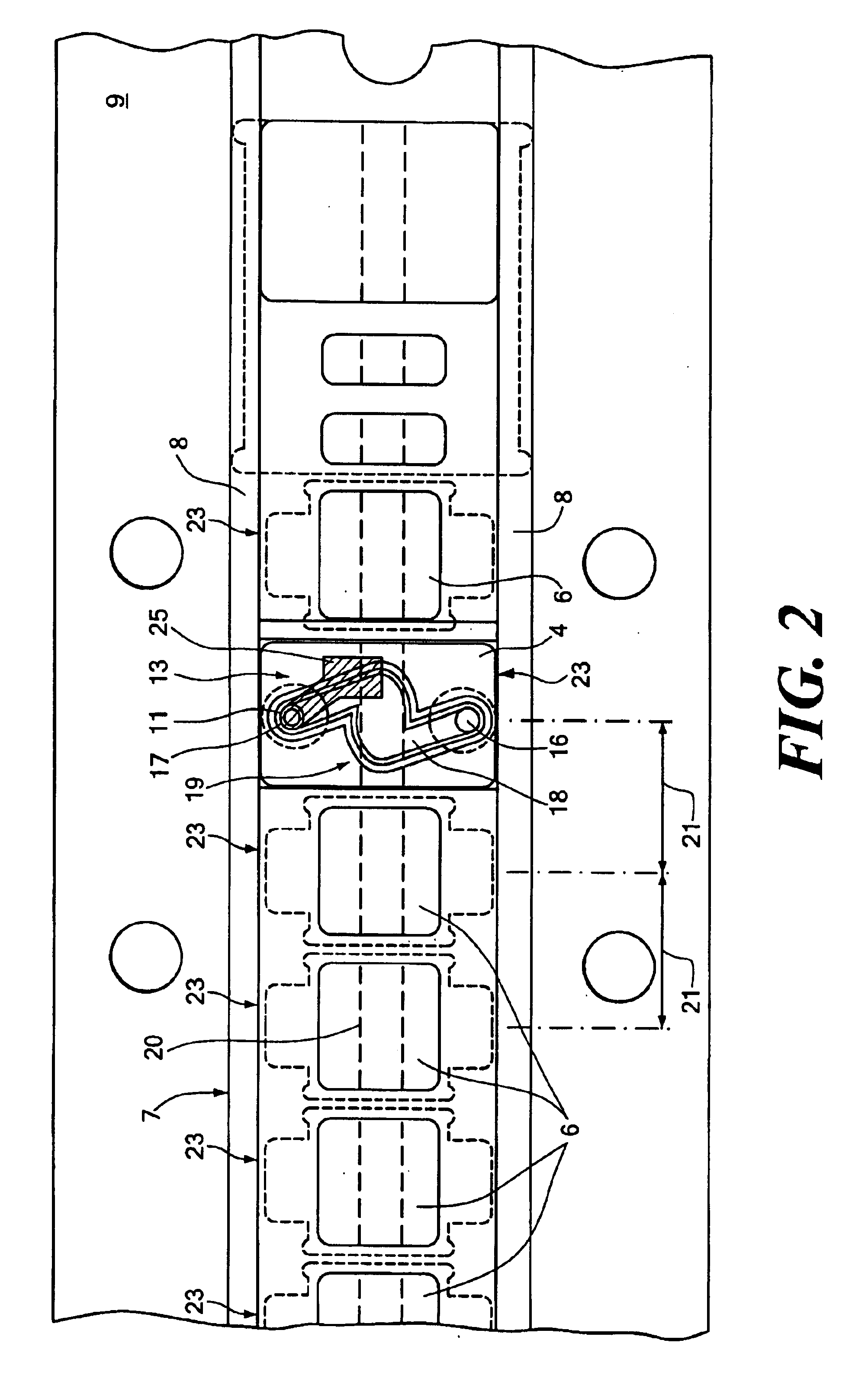Reference electrode assembly
a reference electrode and assembly technology, applied in the field of reference electrode assembly, can solve the problems of requiring volume particularly complicated, affecting the accuracy of reference electrodes, and compromising the accuracy of associated electrodes
- Summary
- Abstract
- Description
- Claims
- Application Information
AI Technical Summary
Problems solved by technology
Method used
Image
Examples
example 1
Reference flow cells were either machined from rigid acrylic or injection molded using ABS plastic. For each flow cell constructed, the constraint material was an ion and water permeable free-standing 0.001" thick cellophane (uncoated regenerated cellulose) film membrane obtained from Flexel, Inc., Atlanta, Ga. The film was placed over an elliptical shaped chamber 19 of the flow cell (the chamber having a volume of approximately 3.5 .mu.L). The film was hermetically sealed to the chamber region of the flow cell with compression from a gasket on top of the flow injection sensor module assembly. Sample solution and liquid junction solution flowed past each other on opposites sides of the surface of the cellophane film membrane at a flow rates of from about 5 to about 100 .mu.L / sec. A common peristaltic pump was used to simultaneously move both solutions. Electrical contact was established via an electrochemically plated 0.012" Ag / AgCl or Ag wire located either within the remote reserv...
example 2
Reference electrodes were prepared as described in Example 1 with the following exceptions.
The placement of the reference contact region (a Ag wire) was varied. A three dimensional sodium ISE working electrode (200 Series obtained from Ciba Corning Diagnostics Corp., Medfield, Mass.) was tested with three reference electrodes using a junction solution of 2 M KCl / saturated with AgCl. The reference electrode used as the control was a 200 Series Corning Diagnostics Corp. three-dimensional type of reference electrode. The calibration reagents were that used on the Ciba Corning Diagnostics Corp. 644 Instrument.
In Set A, the reference electrodes tested had a Ag wire located in the base inside the chamber. A reference electrode prepared with a Ag wire in the base of the flow cell was tested over a period of 35 minutes. The average within sample drift was -0.047 mV / sec. A reference electrode with a Ag wire in the remote reservoir was tested under the same conditions and was found to have an...
example 3
Reference electrodes were prepared as described in Example 1 with the exception that the chamber had a larger volume (16.8 .mu.l) as compared with the chamber of Example 1 (which had a volume of 3.5 .mu.l). A three dimensional sodium ISE working electrode (as described in Ex. 2) was tested with three reference electrodes using a junction solution of 2 M KCl / saturated with AgCl. The reference electrode used as the control was a 200 Series Corning Diagnostics Corp. three-dimensional type of reference electrode. The calibration reagents were that used on the Ciba Coming Diagnostics Corp. 644 Instrument. The reference electrodes tested had a Ag wire located in a base inside the chamber. The electrodes were tested over a period of 35 minutes. The average within the sample drift was -0.012 mV / sec. When repeated the average within the sample drift was -0.028 mV / sec. The control 200 Series reference electrode had an average within sample drift of 0.001 mV / sec.
PUM
| Property | Measurement | Unit |
|---|---|---|
| temperature | aaaaa | aaaaa |
| volume | aaaaa | aaaaa |
| volume | aaaaa | aaaaa |
Abstract
Description
Claims
Application Information
 Login to View More
Login to View More - R&D
- Intellectual Property
- Life Sciences
- Materials
- Tech Scout
- Unparalleled Data Quality
- Higher Quality Content
- 60% Fewer Hallucinations
Browse by: Latest US Patents, China's latest patents, Technical Efficacy Thesaurus, Application Domain, Technology Topic, Popular Technical Reports.
© 2025 PatSnap. All rights reserved.Legal|Privacy policy|Modern Slavery Act Transparency Statement|Sitemap|About US| Contact US: help@patsnap.com



